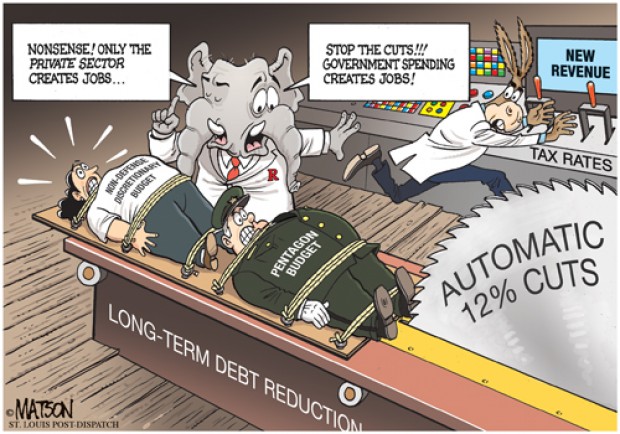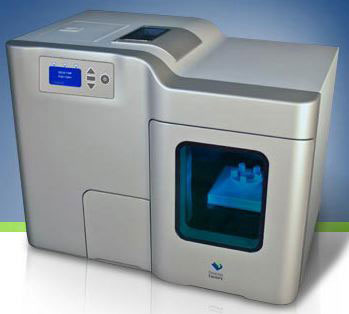In April 2010, he met with three executives from Madison Dearborn Partners, a private-equity firm based in Chicago with a wide-ranging portfolio of investments. They recently hired Dunn to run one of their newest acquisitions — a food producer in the San Joaquin Valley. As they sat in the hotel’s meeting room, the men listened to Dunn’s marketing pitch. He talked about giving the product a personality that was bold and irreverent, conveying the idea that this was the ultimate snack food. He went into detail on how he would target a special segment of the 146 million Americans who are regular snackers — mothers, children, young professionals — people, he said, who “keep their snacking ritual fresh by trying a new food product when it catches their attention.”He explained how he would deploy strategic storytelling in the ad campaign for this snack, using a key phrase that had been developed with much calculation: “Eat ’Em Like Junk Food.”
After 45 minutes, Dunn clicked off the last slide and thanked the men for coming. Madison’s portfolio contained the largest Burger King franchise in the world, the Ruth’s Chris Steak House chain and a processed-food maker called AdvancePierre whose lineup includes the Jamwich, a peanut-butter-and-jelly contrivance that comes frozen, crustless and embedded with four kinds of sugars.
The snack that Dunn was proposing to sell: carrots. Plain, fresh carrots. No added sugar. No creamy sauce or dips. No salt. Just baby carrots, washed, bagged, then sold into the deadly dull produce aisle.
“We act like a snack, not a vegetable,” he told the investors. “We exploit the rules of junk food to fuel the baby-carrot conversation. We are pro-junk-food behavior but anti-junk-food establishment.” - Michael Moss, New York Times
I just spent about an hour reading this article from the New York Times about the science of junk food I heard about it on NPR this afternoon. It took me an hour because I fell asleep repeatedly while reading it. Mom-hood means that sleep is a commodity that I don't always get and if I'm remotely warm and comfortable, I fall asleep easily, especially if the reading is just a little dense; this article was dense…but in a good way.
I am planning to make coq au vin for dinner tonight. And don't get your knickers all in a bunch thinking this is complicated. For those of you who don't know, it's just chicken stew with a whole lotta wine in it. I haven't gotten to it yet. I'm hungry but you know what I really could go for: chips. Salty, crunchy chips. I have given up potato chips because of my acid reflux. But it was a hella hard thing to do because any kind of fried potato will cause me to sell a kidney in order to eat it. For a long time I only ate Utz unsalted. Then I started eating ripple cut and salt again became a part of my diet. It hurt me in a special way when I understood that potato chips and hot, salty, delicious french fries messed me up royally in the digestion department. So now I eat Trader Joe's multigrain corn chips. I tried many different healthy brands but this one worked because…it had enough salt for me to suck on. Seriously.
Why have I gone on with this diatribe about chips? Because this article is an in depth report on the history and tactics the food industry has used to sell their products, resulting in the public becoming extremely unhealthy and making themselves very profitable at the same time. By essentially addicting people to the things that our body instinctively craves, we have consumed more of it and now have 12 year olds with Type 2 diabetes, high blood pressure, and the beginnings of heart disease.
Though people can and should make their own personal choices, these business strategies heavily encouraged the behavior of eating processed foods. This article points out that industry insiders were well aware of what their foods were doing to people's health outcomes and some of them were trying to change it. But food companies are there to make money, not be healthy. More salt, fat, and sugar makes things good and in the heavily processed food world, that is gold. So what if they are incrementally causing people's deaths and harming society? Their job is to make money and they do that very well.
But it's a lot more complicated that that. People's lives are busy. These businesses are filling a niche that has been around since the 1940's: Working people. Convenience foods are extremely helpful in a lifestyle where both parents work and cooking has become a lost art for some. Now people have been trained generationally to crave certain foods and if they can't make it at home, it's incredibly easy and relatively cheap to get it. Advertising, food research and psychology are being used to entice people into thinking that their food is (insert whatever "they" think you think you want) -- therefore, you purchase it.
So back to my quote up at the top of this blog. The reason I chose this one, was two-fold: I wanted show just how much thought and effort was put into turning foods that shouldn't be good into good food, worthy of purchase. I also wanted to ask the question, what if food companies put all their research and psychology towards the marketing of healthy food? What if companies had a sense of community responsibility as well as a profit motive and came away from the dark side of the force, and marketed actual healthy food and not pseudo healthy food, i.e. yoplait-like yogurts, which have more sugar in them than a candy bar. What if there were basic standards for how much sugar, salt and fat could be used in mass processed foods? And the entire industry had to adhere to this so no one could gain market share over another? And if those foods didn't taste good without those additives, that we could think about not having those foods produced -- which would probably wipeout tens of foods including but not limited to colas, cereals, crackers(chees-its without salt and powdered cheese, probably disgusting), some chips, breakfast foods...
Food might become quite a bit more expensive as you needed more "real food" in order to make…well…real food. Most processed foods are made with chemicals and processed sugar, fat, and salt, to make it taste good. (try this experiment at home: make a meal that sucks and then add a lot of sugar to it, and watch your children devour it. It actually does work. Not so well with salt…)That type of food may not last as long on the shelves because real food decomposes relatively quickly. However, we would be paying for food, not food product. There are all sorts of issues that come up for me economically and socially about higher food prices. Yet we as a society have to think about the long term health of our country's people. Do you want people to pay less for food and then get ill later on in life and create extremely high medical bills, or do we want to encourage responsible eating habits to hopefully avoid those issues en masse?
Update: the Coq au vin was slamming and made in about 30 minutes! However, in true kid style, my kids were less than impressed...






